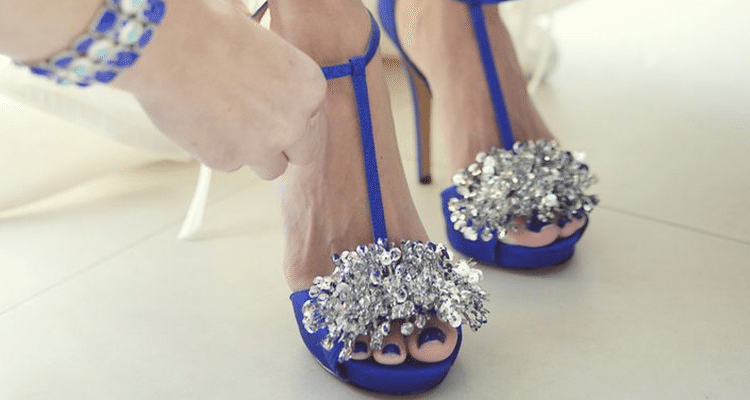Everyone, from Granny Beulah to the four-year-old down the street, knows the bridal tradition: Something old, something new, something borrowed, something blue. Some of us are surprised to find there’s one more line: And a silver sixpence in your shoe.
All told, the tradition’s designed to whip up a powerful charm for matrimonial fortune. Although the rhyme began in the United Kingdom, the customs it describes have been around for centuries longer. Even here in the twenty-first century, they haven’t much changed.
Something Old
“Something old” reminds you of your origins. In the old days, if you married above your class, this might serve as a grounding force and prevent you from acting insufferable around your less fortunate relatives.
More universally, something old reassures the bride that her marriage doesn’t simply exists in a vacuum, but is part of a much broader, longer story with many chapters yet to come. Wearing something old, such as a locket containing a picture of your mother or grandmother on her wedding day, is one powerful way of symbolizing your connection to your ancestors. Another nice touch is to take an old handkerchief from a family forbear and have it sewn into the lining of your gown.
Something New
The union you’re now creating with your fiancé on your wedding day is the “something new.” You can blend this neatly with the old by tucking a small photo of you and your partner in the same locket, on the opposite side from the your mother or grandmother. Alternately, you could wear a special piece of jewelry given to you by your groom, such as a necklace, brooch or bracelet.
Something Borrowed
“Something borrowed” serves two purposes. One is to reflect your love and admiration for the person you borrowed it from. When you ask this person to borrow an item of theirs on your wedding day, they’ll know exactly how important they are to you, and you’ll be reminded of those that love and support you. The second is to borrow the success and good fortune of a happily-married couple.
Many brides choose their mother’s wedding ring to symbolize something borrowed, a beautiful way of honoring your parents’ marriage. If your best friend has preceded you in marriage and happily so, perhaps you could borrow one of her signature pieces of jewelry as a reminder of your friendship — and a token of good luck. By custom, for the luck to stand, you must return the item.
Something Blue
Blue worn on the wedding day symbolizes the couple’s fidelity. In Biblical times, the bride wore a blue ribbon to signify her faithfulness, and later, after blue became associated with the Virgin Mary, the bride often wore a blue dress. Blue isn’t always easy to fit into contemporary bridal attire, but it can be done. Try a necklace with a petite blue stone, a blue ribbon, blue underwear, or a blue garter.
A Silver Sixpence in Your Shoe
This old Scottish custom is exactly what it seems: a recipe for good fortune. The bride places the sixpence in her left shoe to attract wealth in her marriage (although by old world customs, the father is responsible for placing the sixpence). The sixpence is no longer made in Britain and can be difficult to find, so many American brides substitute a shiny penny instead.
These are just a few simple ideas to help you sustain the time-honored tradition of “something old, something new.” With just a little thought and imagination, a creative bride can incorporate all of these customs in her attire. And when she walks down the aisle adorned with symbols honoring her family and other inspirational people, she just might feel a sense of being part of something much larger. For many brides, that’s exactly how it happens.


